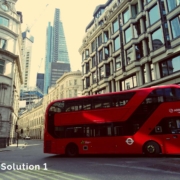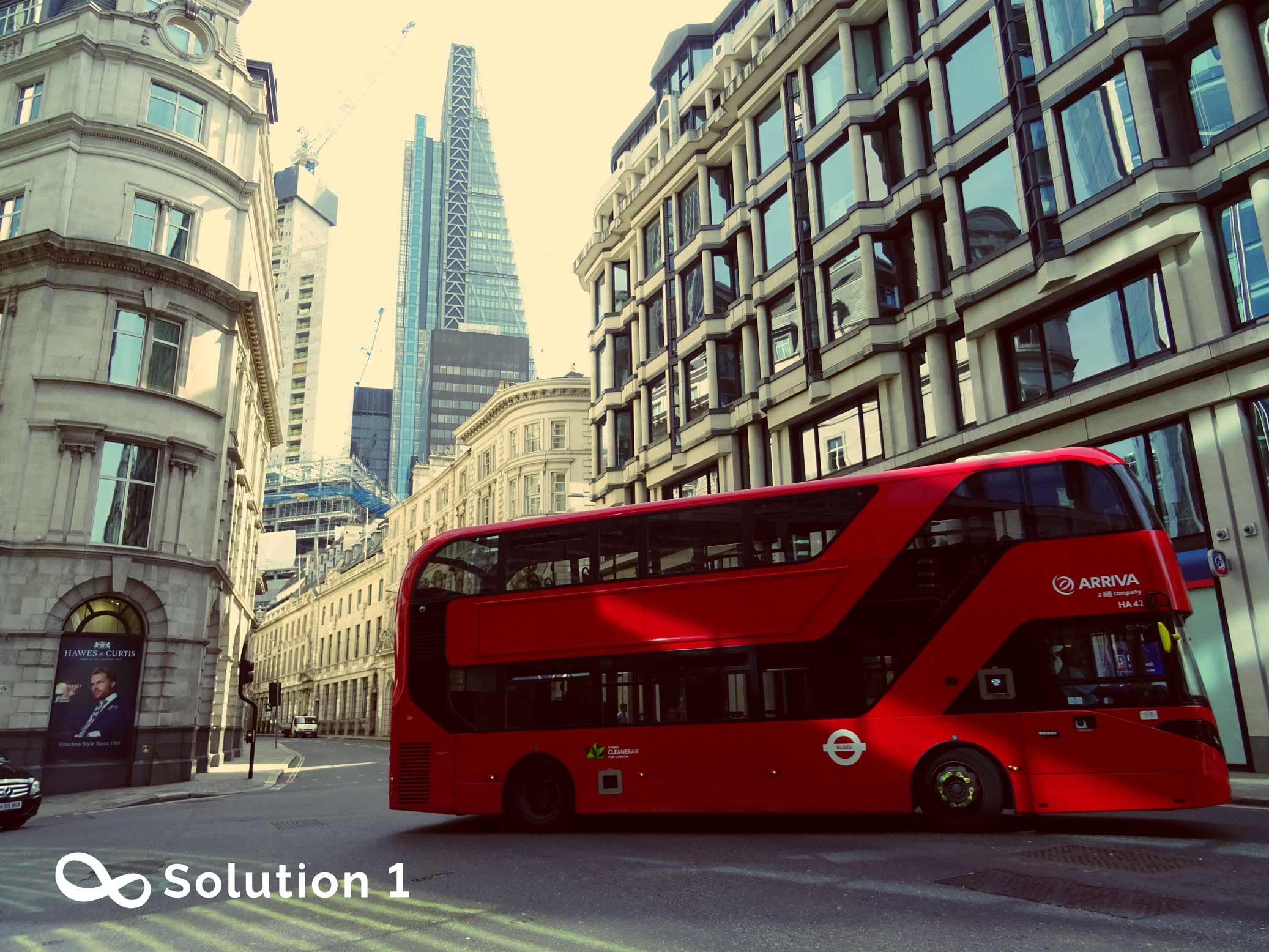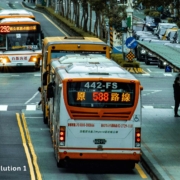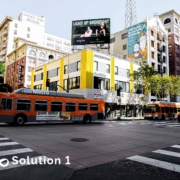Electric bus adoption has significance in the near future of public transit systems.
- The transport sector in the UK is currently in an energy transition phase.
91.5% of new buses and coaches registered in the UK in 2020 were diesel or diesel-hybrid. Transport is the largest sector for greenhouse gas emissions in the UK, responsible for approximately 28% of emissions annually. Levels have remained relatively unchanged from 1990 to 2017, there has only been a 3% reduction in this time period despite many technological and policy-based interventions. Within these statistics, the road transport sector is consistently the most prevalent, alongside being the source of numerous pollutants that have been identified as posing a risk to human health and environmental damage including nitrogen oxides, and fine particulate matter.
As the UK Government has set a legally binding target of net zero emissions by 2050, significant effort will be required to effectively decarbonize and reduce air pollutants associated with the transport sector. Alongside technological developments in clean powertrain, there is also an emphasis on encouraging modal shifts towards more sustainable forms of transport including walking, cycling, and public transport, which is elevating the importance of more rapid powertrain technologies for the public transport sector.
In 2020, there were approximately 142,000 buses and coaches in operation across the UK, with an average age of 11.2 years. A large number of UK cities have already successfully transitioned low-emission buses into their city fleets, and emphasis has now moved to ultra-low emissions buses, vehicles that are certified as saving at least 30% on greenhouse gas emissions compared to a Euro VI diesel bus of equivalent size.
To protect the environment and improve the quality of the air we breathe, it is essential to revolutionize transportation, starting with cities, which today occupy 2% of the earth’s surface but produce 70% of carbon dioxide emissions, a quarter of which is due to road transport. Given that by 2050 two-thirds of the world’s population will live in urbanized areas, we need to act as soon as possible. Electrifying buses is an important decision. Not only does it reduce carbon emissions, but it also allows administrations and transport companies to reduce their operating and maintenance costs.
- Poland is continuously replacing conventional buses with electric buses to meet the EU 2050 objective of decarbonizing the transport sector.
In most developed countries, electricity generation is being shifted to more clean and renewable sources. Therefore, electric mobility is considered a better alternative to reduce the transportation carbon footprint. Electric buses provide numerous benefits, the most notable of which is the reduction in air pollution levels. Using electric buses also provides a reduction in noise emissions and improvements in the comfort of transportation in cities.
“Electric buses do not produce environmentally harmful exhaust fumes and emit much less noise than conventional buses. According to the Polish Alternative Fuels Association, as of the last day of 2021, Polish cities had a fleet of 615 city buses. This is about 5.2% of all vehicles of this type in Poland.”
More than half of all the electric buses registered in Poland were part of fleets operating in cities with more than 300,000 residents, which is about 54.1%, such as in Warsaw, Kraków, Poznań, Szczecin, Bydgoszcz, and Lublin.
In 2021, for the first time in Poland’s history, there were more registrations of new electric buses than those with diesel engines, the former is 36%, and the latter is 35%. In terms of the number of newly registered electric buses, Poland took 5th place in Europe, Denmark, France, Great Britain, and Germany took higher positions.
At the end of April 2022, there were 721 electric buses registered in Poland. All indications are that 2022 will be another year in which the number of electric buses will increase. In Poland, there are currently 520 charging stations in use for electric buses, which provide more than 70 MW of power in more than 50 cities.











